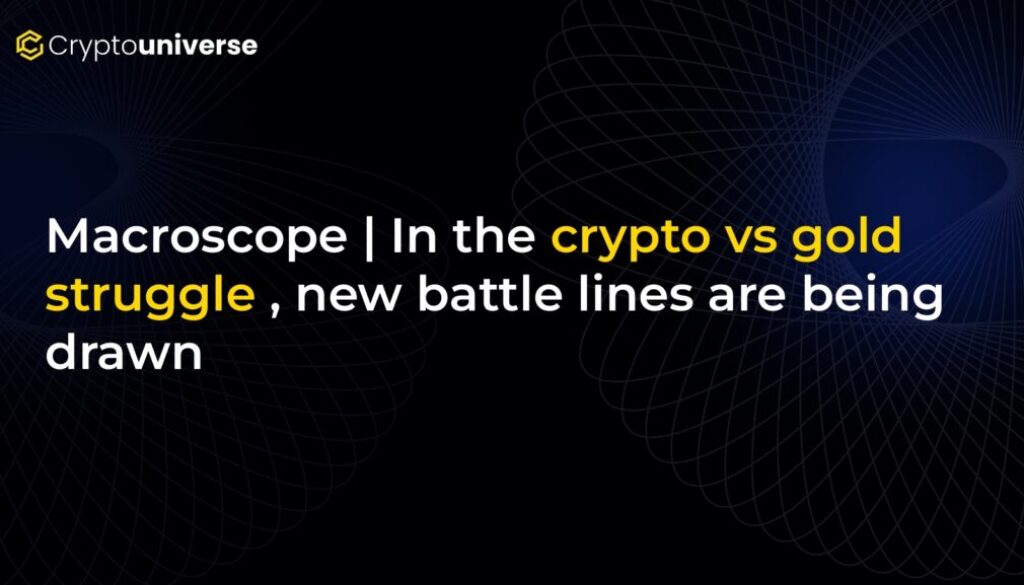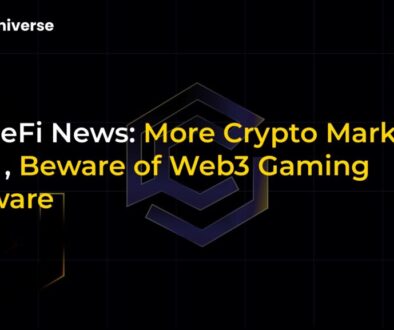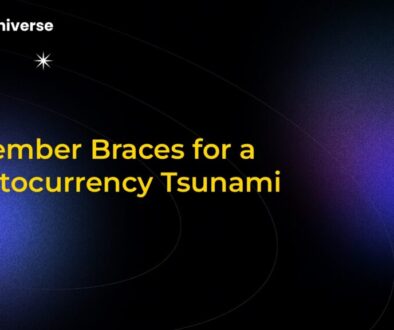Macroscope | In the crypto vs gold struggle, new battle lines are being drawn

The Unlikely Alliance: Why Is a Crypto Giant Buying Gold?
The financial world is witnessing a paradigm shift, one that blurs the lines between the old guard and the new. In a move that has turned heads, stablecoin issuer Tether is making substantial investments in gold. This is more than just a portfolio diversification strategy; it’s a profound statement from a company whose very purpose was to challenge traditional assets like the precious metal it is now accumulating.
This development isn’t happening in a vacuum. It’s a symptom of a much larger trend: growing instability in the global economic and monetary order. As fiat currencies face pressure from inflation and geopolitical tensions rise, both institutions and individuals are scrambling for stability. For a crypto powerhouse like Tether, embracing gold is a pragmatic move to anchor its digital value to a universally recognized hard asset, signaling a pivot from pure digital theory to a hybrid, real-world strategy.
A Playbook from the Past: Crypto’s ‘Asset Stripper’ Moment
To understand the strategy at play, we can look back to a controversial tactic from 1970s Britain. So-called “asset strippers” mastered the art of using synthetic wealth to acquire real, tangible assets. Here’s how their playbook worked:
- Build Perception: They cultivated an image as savvy holding companies, which boosted the value of their listed shares.
- Use Inflated Currency: These overvalued shares were then used as a form of currency to acquire undervalued companies.
- Acquire Hard Assets: The real prize was often the target company’s physical assets, such as valuable real estate.
- Liquidate for Profit: Once acquired, these hard assets were sold off for a significant profit.
A similar dynamic is emerging today in the digital asset space. By backing a stablecoin with a tangible asset like gold, an issuer can enhance its currency’s stability and perceived value. This “gold-backed” digital currency can then be used to acquire other hard assets on a global scale, effectively converting digital representation into tangible wealth. It’s a modern twist on an old strategy, leveraging blockchain technology to achieve what asset strippers did with financial engineering.
The Geopolitical Battlefield: De-Dollarization and the Search for Neutral Ground
The
Consider the moves being made on the world stage:
- China’s Gold Gambit: Beijing is aggressively building a new global payment infrastructure. By making the Yuan convertible to gold and establishing gold vaults across its Belt and Road Initiative, China is creating a direct challenge to the dollar-denominated SWIFT system. Projects like mBridge use blockchain for instant settlement, with gold as a foundational trust layer.
- The BRICS Alliance: Nations like Russia, China, and their allies are increasingly settling trade in local currencies and accumulating gold reserves to reduce their reliance on the dollar.
In this fracturing world, both gold and Bitcoin are emerging as neutral reserve assets. They are not controlled by a single government’s monetary policy, making them attractive havens for countries and individuals looking to escape the fiat debt system. As one macro analyst put it, in a world of trade wars, monetary resets, and de-dollarization, “all roads lead to gold and bitcoin.”
What the Charts Are Signaling for Investors
Market indicators are reflecting this seismic shift. Gold is not just a relic; it’s an active and leading indicator. Its recent breakout from a multi-month consolidation suggests a new phase of liquidity is beginning, often a sign that the broader macro environment is far from stable. Historically, a strong gold rally has often preceded turbulence in the stock market.
For crypto investors, this dynamic is critical:
- The Bitcoin/Gold Ratio: This ratio is a key barometer for risk appetite in the market. Its recent stalling at 2021 levels could be a warning sign, hinting that the speculative fervor in risk assets might be peaking.
- Impact on Altcoins: The flow of capital is key. When a safe-haven asset like gold breaks upwards decisively, it can signal a “risk-off” environment. This could pull liquidity away from highly speculative altcoins as investors seek safety.
Both Bitcoin and gold are showing similar chart patterns, breaking out of massive wedge formations. This suggests that the market increasingly views them not as competitors, but as two sides of the same coin: hard, neutral assets in an era of fiat decay.
Conclusion: The New Financial Order
The old debate of “Bitcoin vs. Gold” is officially obsolete. The narrative has evolved into something far more complex and fascinating. We are witnessing the fusion of the world’s oldest store of value with its newest financial technology.
The new battle lines are not simply crypto against gold. They are drawn between centralized fiat systems and decentralized hard assets; between the unipolar dollar-centric world and a multipolar future built on neutral stores of value. In this new landscape, crypto giants use gold for legitimacy, and sovereign nations use gold and blockchain to declare monetary independence. The struggle is no longer about which asset will win, but how they will coexist and collectively reshape the future of money.


